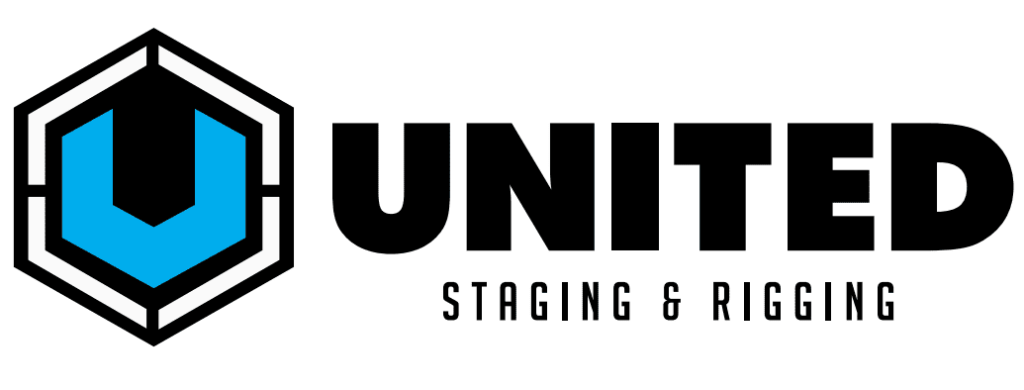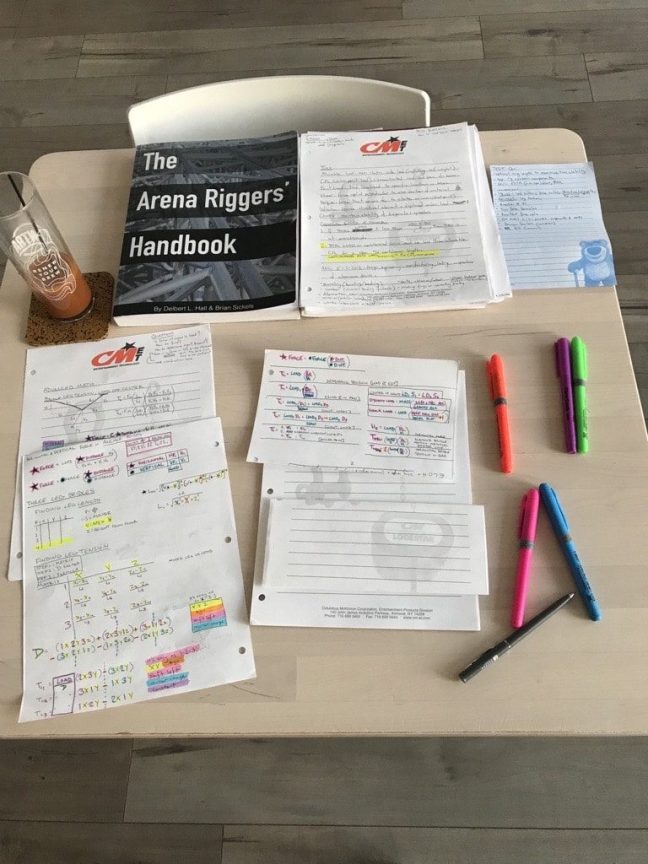| Let’s face it, school was a long time ago for many of us. In fact, I bet most of us enjoy the physical aspect of rigging more than the paperwork. Nevertheless, you have made the important and exciting decision to earn your ETCP certification! Studying for a test – an expensive one at that – can be daunting. Fear not! I have been a nerd all my life and want to share my top tips for studying with you, starting with note-taking. I used these very tips to study for my ETCP Arena Rigging exam. Here are 5 tips for effective note-taking! |
1. Get the Essentials
First, you need a great NOTEBOOK. My personal favorite is the Mead® Five Star® 5 Subject College Ruled Notebook. The notebook has 5 sections (or “subjectsâ€) which help keep your notes organized. Then, you need 3 PENS – one black, one blue, and one red. Lastly, you need many COLORFULHIGHLIGHTERS. I recommend Sharpie® Clear View® Stick Highlighters because the clear plastic between the felt tip and body allow you to see exactly what you are highlighting and when to stop. Why all the pens and highlighters? Studies have shown that colors can improve memory retention.
2. Structure Your Notebook
When studying for the ETCP exam, DEDICATE EACH NOTEBOOK SECTION TO A SINGLE SUBJECT.
For example, you may consider dedicating one section of your notebook for the following subjects:
- Basic Physics
- Truss Math
- Bridle Math
- Advanced Bridle Math
- Chain Motors
- Etc.
A great strategy for structuring your notebook is by looking at the EXAM CONTENT for the test you are taking. The exam content will help you decide which books to study. Then, you can organize your notebook based on the chapters/lessons within that book. For example, the ETCP Arena Rigger exam content includes formulas and forces, so you study from Delbert Hall’s Rigging Math Made Simple 6th ed. to which you dedicate each subject of the notebook to one (or a few) lessons from that book.
​Do what works best for you!
3. The Cornell Method
While there are many popular styles of effective note-taking systems, let’s do THE CORNELL METHOD for today. Check it out:

The left side of the notebook is for QUESTIONS and anything you need CLARIFICATION on for later. This helps you STAY FOCUSED on the current material. Don’t interrupt your state of flow and distract yourself down the YouTube or Internet rabbit hole. Otherwise, you’ll never finish reading that chapter!
​*NOTE* I LOVE using the internet and YouTube for studying. I just do separate time blocks for those types of studying activities.
Leave yourself some lines for ANSWERS and CLARIFICATION. Personally, I write answers in red (that’s just how I roll). I also use the left side of the notebook for ADDITIONAL NOTES I may want to include later.

​Traditionally, Cornell notes include a SUMMARY written at the bottom of the right page. You could even do a summary at the bottom of the left page instead.
​*NOTE* You know you understand the content if you’re able to teach it to someone else.
4. Symbols & Abbreviations
While studying for a rigging exam, chances are you’re gonna write certain keywords thousands of times. To save valuable paper real estate (and to save time keeping up with a live speaker), create a system of SYMBOLS and ABBREVIATIONS. Below are some examples. Some may seem obvious, but feel free to use these examples and build upon your own system!
5. Visuals
Our brains are incredible visual processors! Various types of visuals such as DRAWINGS, SKETCHES, PHOTOS, ICONS, LOGOS, SYMBOLS, and CONCEPT MAPS support transforming learning into memory. Learning is solidified more so when you physically put pen to paper and when you are able to make ASSOCIATIONS with the concepts you are learning (especially if those associations are based on EXPERIENCE and/or emotions). Consider printing out photos and writing important facts behind them to memorize. Boom! Flashcards!

​At the end of the day, what matters most is that you implement techniques that best serve you. I hope you found these tips helpful. Share this article if you did! Good luck, rig safe!

